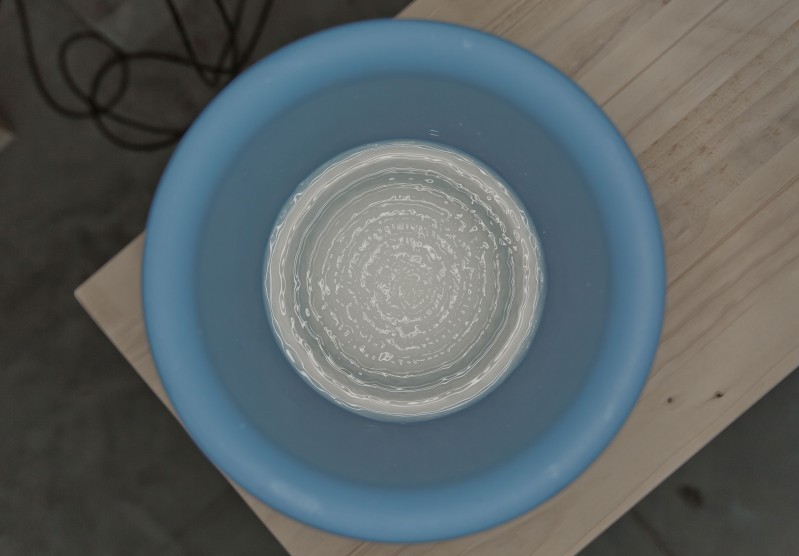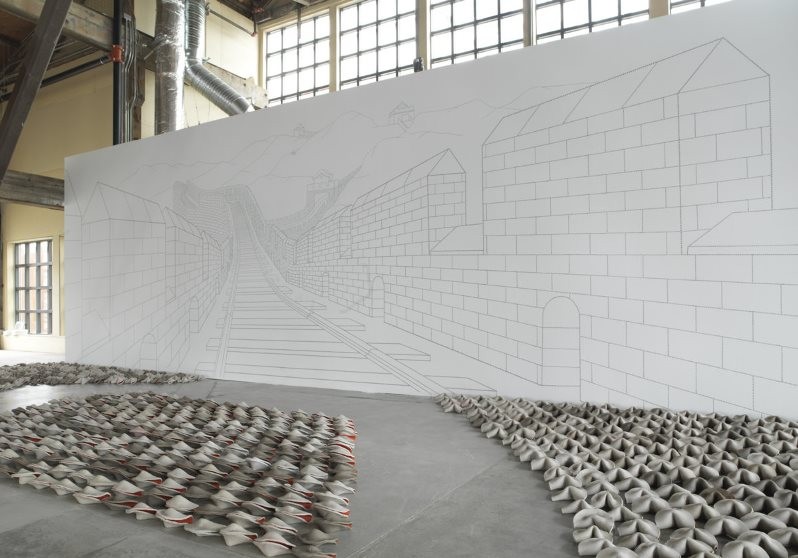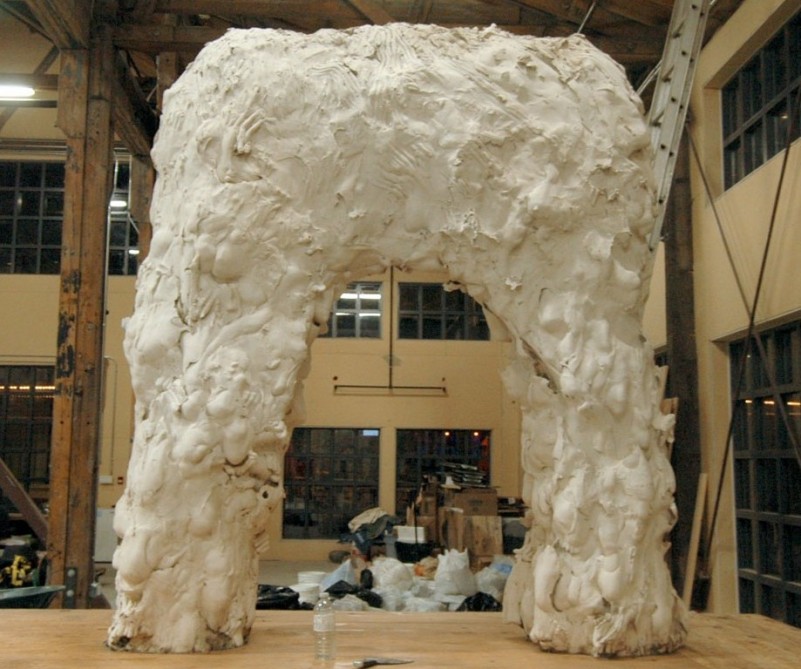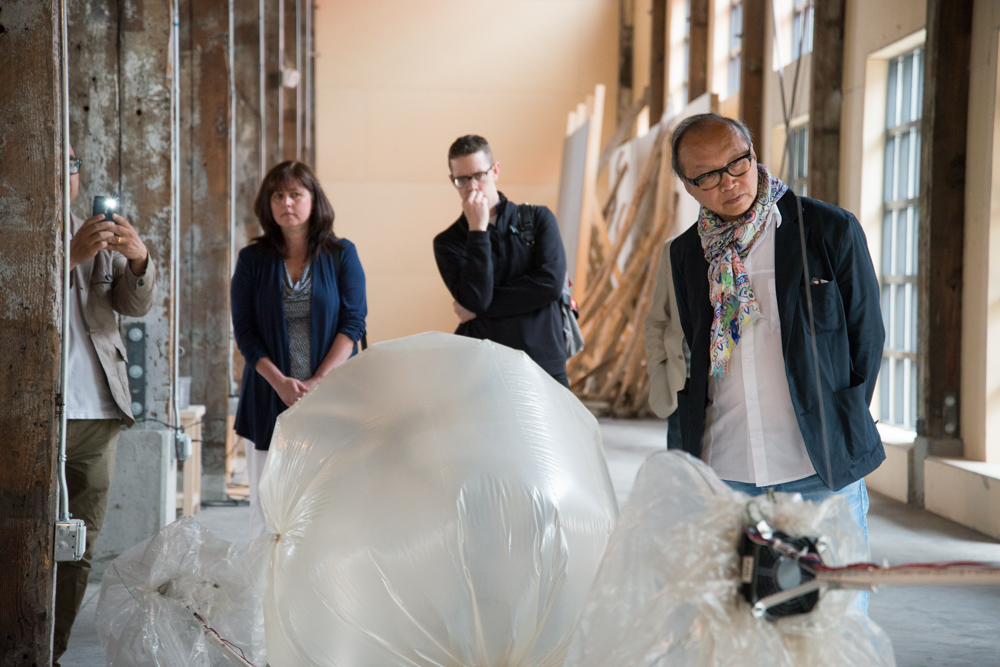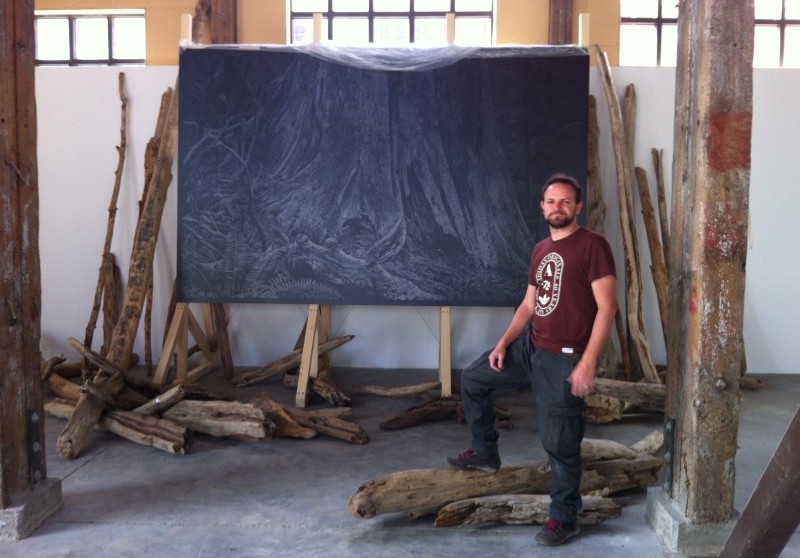Rainfall in Vancouver & São Paulo
Language Arts - Grade 7
This inquiry challenge is intended to be used in connection with the full set of cross-curricular, multigrade inquiry challenges written for the entire Pavilion exhibition. The related unit plans are listed as “Related Material”. This unit of inquiry is not a recipe book but rather a launchpad to inspire new BIG IDEAS. We encourage you to use and/or modify one, or several of the BIG IDEAS below. Adapt it to the grade/ ability level of your students.
Enduring Understanding
Artwork has the power to reflect the stability and instability of culture, economy, government both past and present.
Guiding Questions
In what ways can stigmatism be broken down and perception be changed about a nation? How would you describe the current state of affairs in Brazil? What are the collective voice of the Brazilian contemporary artists? How does the current state of affairs in Brazil relate to life in Vancouver, Canada and the world?
Mind Opening
Choose or devise practices to encourage students to be open to new experiences and ways of thinking in your classroom. For example, the MindUP in-school program.
Discovery and Inspiration:
Launch the Project
• Introduce the Theme: Present the Enduring Understanding and Guiding Questions using vocabulary that is appropriate for your grade level.
• About Vancouver Biennale: Play a short video.
• Create Project Space: Brainstorm ideas to make the project theme visual and visible using bulletin boards, and/or a project corner to share relevant materials and inquiry questions and processes.
Reference Resources:
• Vancouver Biennale 2014-2016 Exhibition Theme: Open Borders / Crossroads Vancouver,
• Biennale International Pavilion/Focus on Brazil: for Information about the Pavilion
• Unit Plan Feature Art Installation and Artist: Chora Chuva by Gisela Motta & Leandro Lima
• Related Unit Plans: Brazil’s Current State of Affairs, Relating Art to the Human Body, Borrowing from Indigeneity: Totems, Relating Art to the Written Word, Tension in Canadian History
• Other Pavilion Brazilian Artists: Paulo Climachauska, Nathalia Garcia, Juliana Cerqueira Leite, Mariana Manhães, Marcelo Moscheta, Raul Mourão, Tulio Pinto, Studio in the City
Behind the Scene Making of the Pavilion Video
Learning to Learn:
Art Inquiry
• Ask students to write in their journal and share how would they describe the culture of Brazil before visiting the Pavilion and indicate how did they form these impressions. After the visit, ask the students if their perceptions have changed and if so, in what ways.
• BIG IDEAS Anywhere educators: Experience the Pavilion and its thought provoking Brazilian art anytime here using a 3D Navigator/Viewer – you can walk around the space with your mouse and interact with the artt as if you are there! For best virtual art inquiry experience, freely explore the Pavilion and locate Chora Chuva (Gisela Motta & Leandro Lima) for further inquiry challenges. Interact and experience with this installation from different angles using the 3D Navigator/Viewer. Also view the Pavilion Guided Tour Video segment about this artwork (from 6:00 to 6:40 min) with MUTE ON.
• Use the Art Inquiry Worksheet to guide and capture their ideas and impressions. Customize or create your own Art Inquiry Worksheet as appropriate for your project and class needs.
• Click the Box Below to begin your Pavilion Virtual Exploration via 3D Navigator/Viewer provided by Real Estate Channel (Contact: [email protected])
Shared Insights
• Sharing Art Inquiry Experience: Ask students to share the Art Inquiry Worksheet responses in class.
• View Guide Tour Video: View the Pavilion Guided Tour Video introduction segment and the segment about this artwork (from 0 to 1:15, 6:00 to 6:40 min) again with SOUND ON.
• Significant Aspects of the Artists’ Life & Work : Using the following Gisela Motta & Leandro Lima, teacher creates stations detailing the artists’ life and work. In small groups, students rotate through these stations. Topics might include: (1) education and training; (2) life’s work; (2) materials and processes; (3) beliefs and values. At each station, students answer questions and/or complete tasks. For example, at the station “life’s work” students might plot the artists’ various installations on a map of the world.
• Artist Themes – At a Crossroads: Bring up the artists’ interpretation of At a Crossroads as a point in a story or drama when a conflict reaches its highest tension and must be resolved or A crisis situation or point in time when a critical decision must be made. Ask students to write down and share in groups if they have encountered a similar situation and the impact on their life.
• Artist Themes – Invasion of Rain: Bring up the artists’ concept of rain as a condition of transformation, transition and combining it with an intimate relationship, the internal space. Chora Chuva recreate an unstable situation where what should be kept on the outside, the rain invades an indoor area. Ask students to write down situations they know when our safe spaces are invaded by force of nature or human. Share in groups the tensions these situations have created.
Cross-Curricular Inquiry Challenges
Chora Chuva (Gisela Motta & Leandro Lima) Inquiry Challenge:
How does rainfall affect Vancouver, Canada and Sao Paolo, Brazil? What tensions does it reflect?
• Geography/ Language Arts: Students will Compare and contrast rainfall and its effects in Vancouver, Canada and São Paulo, Brazil, noting similarities, differences and comparing overall precipitation. Using the web resources listed below, students fill out the following Geographical Influences on Climate for homework and submit it for assessment. Using the web resources listed below, half the groups conduct research on the effects of rain on people’s lives in Vancouver. The other half researches the effects of those living in Sao Paulo, Brazil. Groups present their findings to the class and students noting similarities and differences on the chart provided. Teacher to ask the final questions: What are the similarities and differences of the effects of rainfall between these two cities? Students then complete the final chart.
The Rio Times articles on Sao Paulo: The cost of flooding in Sao Paulo, Aid for Rio State, With Over 810 Dead and 469 Missing
Vancouver:
Ten Things to Do on a Rainy Day in Vancouver (Tourism Vancouver)
100 Rainy Day Activities in Vancouver (Hello VanCity)
Rain in Vancouver Photos – HuffPost Vancouver article
Climate and Weather in Vancouver
Leaky Condo: Vancouver Sun article, Vancouver Courier article
• Science – A Molecular Superhero: What properties make water unique? Water’s chemical makeup — two hydrogen atoms bonded to an oxygen atom — give it a suite of characteristics not shared by any other liquid. Water molecules are polarized, meaning that one side of the molecule carries a negative electric charge, while the other side is positive. This polarity helps water dissolve many substances, like salt (think of the oceans) or acetic acid, which dissolves in water to become vinegar. Hydrogen bonds between water molecules make water “sticky,” which means that water molecules tend to stick to one another. This stickiness, or cohesion, allows water to travel up the length of a tree, all the way from its roots to its canopy. And fortunately for aquatic and marine life in cold places around the world, water floats when it freezes — meaning fish, frogs and many other animals can survive winter weather in the water beneath the ice. Research these and other properties of water. Then, write a comic strip or graphic novel featuring water as a superhero.
Reflection
• Teacher and students can reflect on their entire learning process by revisiting the Enduring Understanding and Guiding Questions.
• How did the unit of study open inquiry, create cross–curricular learning opportunities and/or apply learning to real life situations? Has this unit of inquiry changed your opinions, values and world view? In what ways, if any, has it helped you grow as a learner?
Credits
Written by: Stephanie Anderson Redmond,B.A.; B.Ed.; M.Ed.; Ph.D.. Student, Department of Curriculum and Pedagogy, UBC
©2014 Vancouver Biennale
